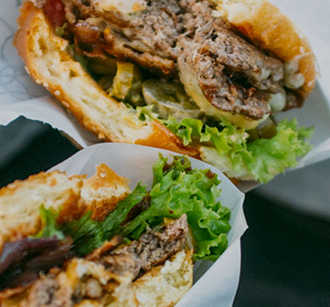
When it comes to embracing change, few industries do it better than those in the Quick Service Restaurant (QSR) business. As the industry continues robust growth – with consumer spending generating $299.6 billion in the U.S. from 2004 to 2018 – many leading QSRs see digital transformation as an effective means to meet growing customer demand for improved speed and ease of check-out.
Since consumers, particularly millennials and Gen Z, are particularly digitally savvy, there is a growing expectation that quick service restaurants must adopt new technologies to offer better in-store and online experiences. This expectation is most pronounced when it comes to placing orders. A recent market survey found that 39 percent of QSR guests placed their meal orders using a smartphone app. This represents a significant increase from 2015 when ordering by mobile device was only 11 percent. This same report found that 28 percent used a kiosk and 27 percent used a tablet to place their order.
Using Connected Commerce to Improve the QSR Experience
The latest trend in QSR is connected commerce, which brings together the convenience of online technology and the proven brand attraction of brick and mortar stores. “Connected commerce leverages the latest technology to bring added value to the consumer and the merchant alike,” explained Scott MacKay, Head of Universal Commerce for First Data. “Let me give you an example of how this works. A popular QSR was struggling with lunch-hour traffic at its stores. Drive-thru line-ups wrapped around the block and the queue was equally long in the lobby area. This was creating a frustrating QSR experience for customers and jeopardizing sales. By launching a mobile app for ordering, the QSR was able to remove some of the choke points around POS and the squawk box, speeding up orders and increasing same store sales – a win/win for customers and the business.”
MacKay provided another example of connected commerce in action. He described a major QSR chain that introduced a mobile application enabling customized food selections. Customers could add food items to their menu choices without feeling pressured at the POS. Even though these add-ons increased the price of the selections, customers appreciated the ability to create items that were uniquely their own. Not only did this increase basket size per order, but by enabling customers to share their customization choices with friends, the concept ended up going viral. In addition, this made repeat purchases that much easier because customized choices could be saved in the app.
Many QSRs are introducing self-service ordering kiosks to allow customers to control their own QSR experience instore. Research has shown that approximately 31 percent of surveyed quick service restaurant guests had used a kiosk, while 54 percent of those say they expect to use a kiosk within the next year. The same study found that kiosks in general have a higher margin than counter orders, delivering an average lift of 15 to 30 percent per check.
The changes being brought about by connected commerce will seamlessly integrate all aspect of the digital customer experience in the QSR space. By vaulting accounts securely in a mobile application - whether it be Apple Pay™, Google Pay™, Samsung Pay, PayPal, Visa Checkout, or a card on file - merchants can use tokens to authorize transactions in a secure way that doesn’t require guests to reenter card details for each purchase. This simplifies the transaction and dramatically improves the customer QSR experience.
Leveraging Connected Commerce to Reduce Costs in the QSR Industry
Connected commerce also enables merchants to promote lower cost payment options to consumers, such as ACH, in exchange for loyalty offers and other promotions. This provides another win/win for customers and merchants as patrons earn rewards, while merchants drive down the cost of payments.
Another key component of today’s digital transformation is the leveraging of customer data and analytics to lower the cost of customer acquisition. “More and more QSRs are looking to tap into data around customer behavior and purchases in order to make highly contextual offers,” stated Glenn Fodor, Head of Insights and Data Analytics for First Data. “For instance, if you know from the data collected that a person has already eaten their main meal, then it may make more sense to present an offer for a cup of coffee, a snack, or maybe a dessert item. Consumers are more appreciative of these types of targeted offers because they are more relevant.”
As quick service restaurants push the envelope on digital transformation, they are blazing new trails and creating the sorts of rich customer experiences that consumers are craving.





